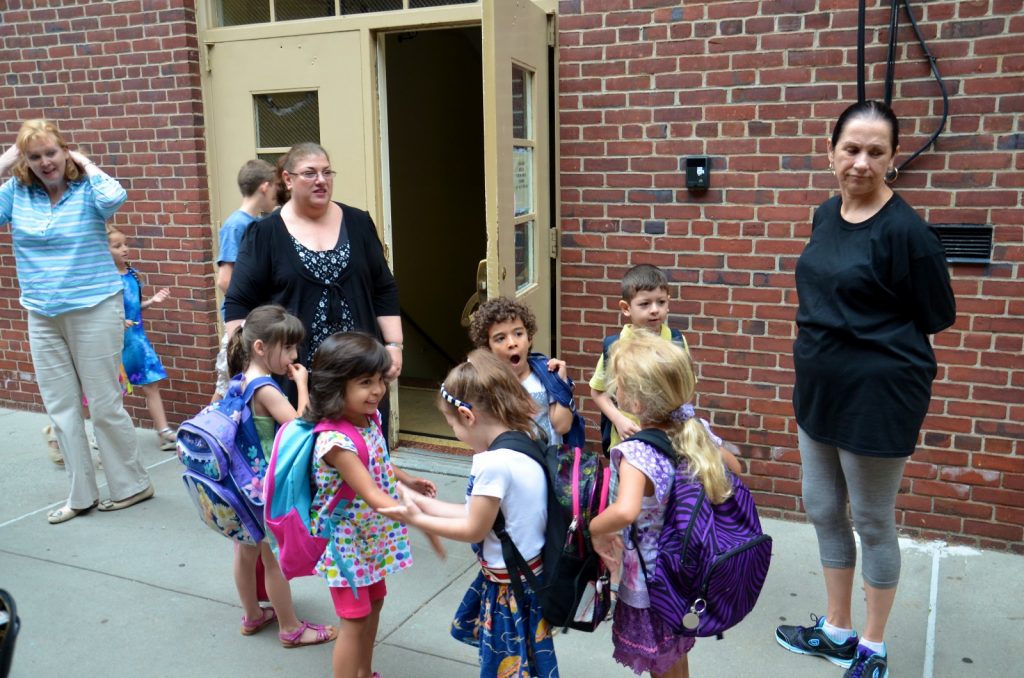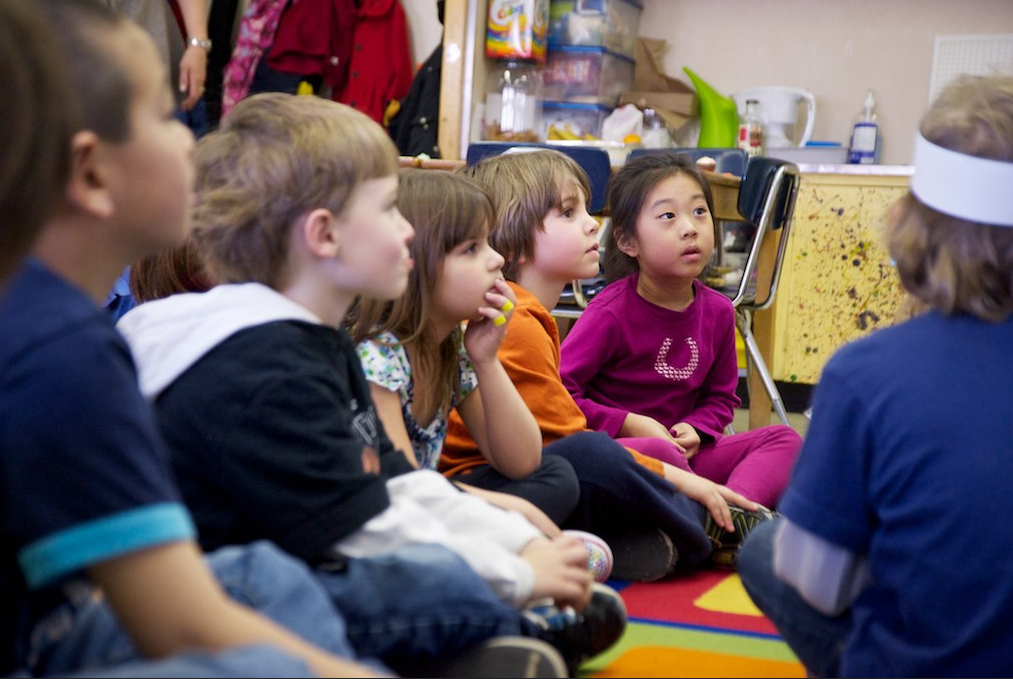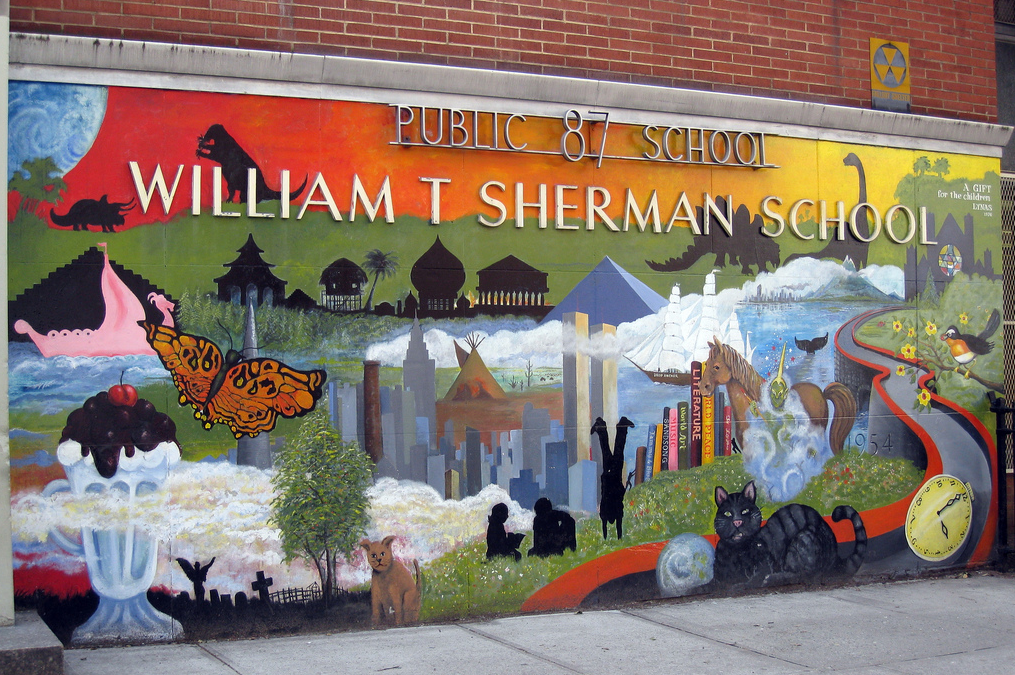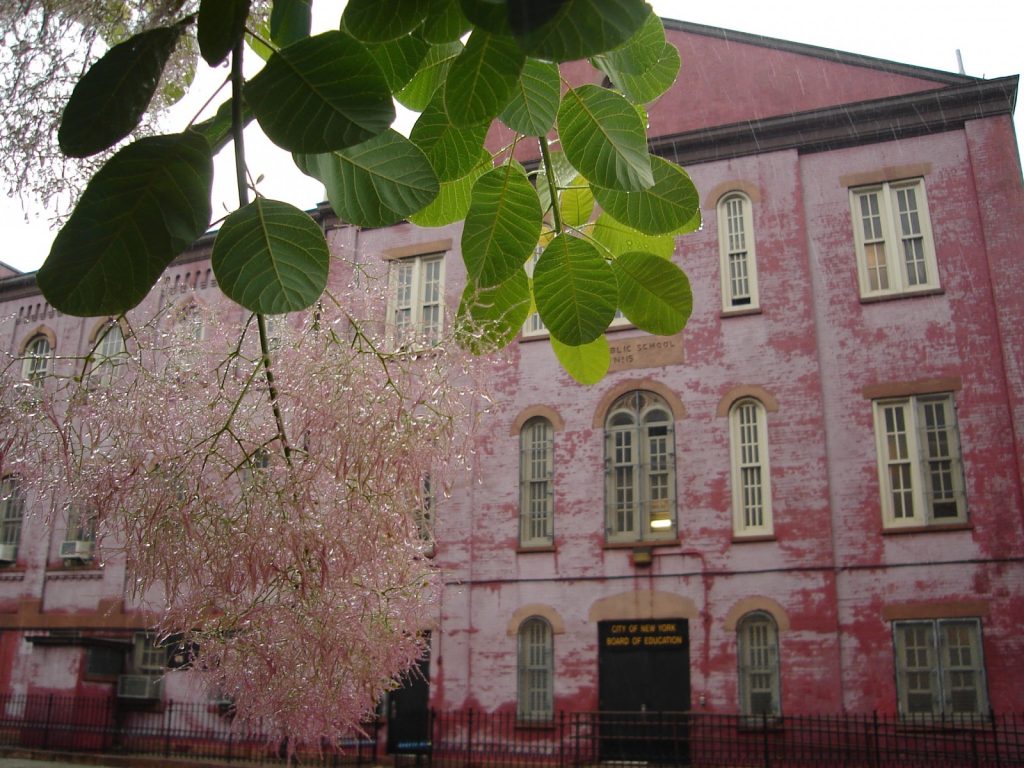
Off to school! (Source: Joe Shlabotnik via Flickr Creative Commons)
When it comes to choosing which school to send your kid to, where you live matters a lot. That said, it is far from the deciding factor and there are many irregularities to the Department of Education’s system of zones and districts. There are also many alternatives to the DOE’s zoned schools as well as tricks to navigating the zoning system. Here’s what you need to know:
What is the Difference between School Districts and School Zones?
The city is divided into 32 geographic districts that encompass many neighborhoods and many schools. These districts are then divided into smaller zones that define the area that a specific local school will serve (i.e., each school is assigned a zone.)
The main differentiating factor is that zones are much smaller than districts and it is your exact address that determines your school zone — not your neighborhood or even street. Your kid is guaranteed a seat in a public school, usually the one for which your address is zoned. When it comes to elementary school placements and especially kindergarten placement, your school zone is an important factor.
How Do I Find Out What School I’m Zoned For?
To figure out what school your kid is zoned for you can go to the DOE’s website and enter your address in the “school search” field. You can also call 311 and give the operator your address. The city is constantly rezoning areas so even the DOE’s website and 311 can give you wrong information. To be 100 percent sure of your zoning designation, it is best to call the school you think you are zoned for and ask them to verify your address.
>>How to Get Your Child Into the Best NYC Public Elementary School
Why Do School Zones Matter So Much?
If you’ve done your research and found a public elementary school that you love and want to your kid to attend, then it will be very important for you and your family to live within that school’s specific geographic zone. Elementary schools and schools zones vary in popularity and population, making some zones and schools very crowded and difficult to get into and others much less crowded and easier to get into. If you live in a very popular school zone, like the PS 199 zone on the Upper West Side or the PS 58 in Carroll Gardens, you may encounter a wait list even if you live in the zone and have applied before the enrollment cut off.
How Can I Learn About Public Schools?
Most kids in New York City attend the elementary school they are zoned for, but they are not required to. Before enrolling your kid in school, do some research about the school options in your area. You may find that the school you are zoned for is under performing and you wish to send your kid to an alternative option. Or you may find that the school you are zoned for is very popular and often has a wait list. Regardless of what you discover in your research, it is good to get the lay of the land. Word of mouth is the best place to start. Ask neighbors, co-workers and other parents for their opinion on local elementary schools. Many feel it is easiest to send kids to their neighborhood school and it offers a good way to build a community of friends and families you trust. Ultimately it is up to you and what makes sense for your lifestyle. There are many resources for parents who would like to get the inside scoop on elementary schools. Several are listed below.
- Insideschools – Insideschools provides authoritative independent assessments of New York City public schools
- Department of Education – The DOE is New York City’s school district and governing body. Their website provides assessment reports of all schools in the district
- New York City School Help – NYC School Help is a resource for Brooklyn parents
- School Search NYC – School Search NYC is highly trusted resource center for parents navigating private and public school admissions
- Mommy Poppins – Mommy Poppins is a New York City blog that provides information for families on schools, neighborhoods and kids’ activities
- Great Schools – Great Schools is a national non-profit that provides school information for families
How Does Enrollment for Kindergarten Work?
In New York City, all five-year olds are required to attend kindergarten, so the DOE guarantees that all children will get a placement. Nonetheless, you must submit an application for your kid even if you are planning on sending them to your zoned school. Here are some things to know.
- The age cut-off works on a calendar year, not by month, so all kids born between Jan. 1, 2012 and Dec. 31, 2012 will need to enroll for kindergarten starting in the fall of 2017. The DOE does not let parents hold their children back if they are born at the end of the calendar year.
- Schools will host tours between November and March for parents’ interested in getting a first-hand look inside a school and its classrooms. Contact the school directly to get a schedule of tour and open house dates.
- Once you’re ready to apply, you can do so online via KindergartenConnect, which allows you to submit a single application for up to 12 schools ranked in order of your preference. If you prefer, you can also apply over the phone (718-935-2009) or at a Family Welcome Center (there are many locations throughout the city, click here to find). Staff members at Family Welcome Centers are available to answer all your school enrollment-related questions regardless of the age of your child.
- Applications are accepted for a six-week period usually beginning the first week in January and ending in the middle of February. Preference is NOT given to those who apply first. Assignments are released at late April or early May.
- Most kids attend the kindergartens they are zoned for and the DOE encourages parents to prioritize their zoned schools.
- Once your child has enrolled at a school, they are guaranteed a seat there for all of elementary school — even if you move to a different zone or the zoning boundaries change.
How Do I Figure Out a School Zone’s Boundaries?
Some parents who want their kid to go to particular zoned school are willing to move into that school’s zone in order to increase the likelihood of acceptance. If you are willing to do this, it can be very helpful to know the geographic boundaries of that school zone. That said, these boundaries are not so easy to track down. The maps provided by the DOE and even the schools’ websites are not always up-to-date. You can ask your real estate broker, but the best thing to do is to call the school directly. Once you have a clear idea of the school’s boundaries you can create a custom boundary search on StreetEasy that matches the boundaries of the school and filter through apartments that way.

Kids in class. (Source: elbertchu via Flickr Creative Commons)
How Do I Know If An Apartment Is in the School Zone I Want?
This can be very tricky because, as mentioned before, school zones frequently change. That said, school zone designation is available on all listing pages on StreetEasy for both sales and rentals. If you scroll to the bottom of the page, you will find this information in the “Nearby” section below the subway and map information. You can also use StreetEasy’s advanced search tools to filter for listings within a specific school zone. Your broker is also a good source of information on this topic, but it cannot be stressed enough that the information is very volatile. No matter what StreetEasy says, no matter what your broker says, no matter what the current owner of the apartment says, the only fool-proof way to guarantee your address is in your desired school zone is by calling the school directly and verifying with a parent representative.
What Happens If Your Kid Doesn’t Get into Your Zoned School?
If your kid doesn’t get a placement at the school your family is zoned for, the DOE will put you on a wait list and place you in another nearby school. You can remain on the wait list for your zoned school until October to see if any seats open up. In general, overcrowding is the biggest issue for pre-K and kindergarten because class size is capped at 25 kids per class. In first grade, things get easier because class size expands.
It’s also worth noting that your likelihood of getting into your zoned school is not based on your home address’s proximity to the school, when you apply or your child’s intelligence or age. It is completely random. The only things that tilt the odds in your favor are if you are zoned for that school and you already have children enrolled there or if you are zoned for that school and you have no other children.

PS 87 on the Upper West Side. (Source: Dave Cook via Flickr Creative Commons)
Alternative to Zoned Schools
For various reasons, some parents may not want to send their kids to the school they are zoned for. There are several alternatives to zoned schools.
- Un-Zoned Schools — Unzoned schools (also known as “choice schools”) are elementary schools that do not use geographic boundaries to determine acceptance. There are city-wide choice schools that accept kids from any part of the city and then there are district choice schools that accept kids from within a specific district. Usually choice schools are more progressive than zoned schools with admission being granted by a general lottery.
- Magnet Schools — Magnet schools are designed to create diversity within an otherwise homogeneous area. These schools receive state and federal funding and often feature special programming or curricula – e.g., science, technology, the arts. Usually you have to live in the district that the magnet school is in, but not in the specific zone.
- Gifted and Talented Schools — Kids entering kindergarten through third grade are able to apply to the DOE’s Gifted & Talented (G&T) programs. These programs are intended to offer faster paced, more rigorous and more specialized options for qualified students. The city offers both district level Gifted & Talented programs as well as city-wide Gifted & Talented programs. Students who score above 90 on the G&T qualifying test are eligible for district programs and students who score above 97 are eligible for city-wide programs. Students who are eligible for enrollment will receive an application to apply when they receive their scores. If you are interested in sending your kid to a G&T program, you must submit a request for testing between October and November of the year prior to enrolling. The test themselves are usually administered in January. You can learn more about how to sign up for and prepare for the tests here.
- Charter Schools — Charter schools offer another alternative to parents who do not wish to send their kids to their zoned school. Charter schools are public schools that operate independently from the DOE. Charter schools are a contentious subject, inciting lots of strong opinions, but it goes without saying that they demand high standards of education and behavior from their students – and often of the students’ parents too! Admission is generally determined by lottery, but again students who live in the school’s district often receive preference. You can find out more about the charter school application process here.
- Private Schools — Private schools offer a whole other world of options for parents who wish to forgo the DOE’s zoning system and New York City public schools. It goes without saying that New York City private schools are incredibly expensive with annual tuition ranging from $35K to $70K depending on the size, location, facilities and prestige of the school. The Upper East Side is notoriously dense with pricey, pedigree prep schools, but in the past 15 years there has been a proliferation of alternative private schools across the city. In addition to more specialized curricula and smaller class sizes, private schools often offer a more liberal age cutoff than public schools. The city has tons of specialized, private schools catering to religious background, subject matter, pedagogy, parenting philosophy and just about everything in between. Word of mouth is great way to pick up general knowledge – ask family members, neighbors and any New York City parent you trust for their opinions on certain schools. You can also refer to the Independent Schools Association of Greater New York’s website for a directory of all private schools in the area. Each school has their own application requirements. Some perform individual assessments, while others require a specific test (the AABL or Admission Assessment for Beginning Learners) or the Kindergarten Reading Test. Learn more about registration dates for the AABL here. It’s a crazy world out there for New York City toddlers trying to get into private school and many parents will hire consultants to help them navigate the system. These professionals cannot guarantee acceptance but they can give you a comprehensive overview of the private school network in the city and help you put forward the strongest application. It is certainly not necessary to work with one and there are many helpful free resources like The Parents League of New York.
Related:










